![KruppCODIR process. [2] | Download Scientific Diagram](/kd8ezfh/34.jpg)
WEBAn established alternative to coal and cokebased reduction of iron ores in blast furnaces is the ore reduction by coal or reformed natural gas (CO, H2) to direct reduced iron (DRI) or hot ...
WhatsApp: +86 18203695377
WEBThe process principles are the basis for numerous rotary kiln plants and still represent the dominant technology for the direct reduction of lump ore or pellets using coal. Operates with the widest range of ironbearing materials, such as pellets, lump ore, beach sand, ilmenite and also iron ore fines with SL/RNXtra.
WhatsApp: +86 18203695377
WEBMar 1, 2014 · Abstract. The industrial appliion of fluidized bed direct reduction (DR) process for fine iron ore is hampered by the sticking of direct reduction iron (DRI) particles. In the present study, the carbon precipitation reaction is coupled with the reduction reaction of fine iron ore to modify the cohesive force among DRI particles.
WhatsApp: +86 18203695377
WEBDOI: / Corpus ID: ; Coal ash induced ring formation in a pilot scale rotary kiln for lowgrade iron ore direct reduction process: Characterization and mechanism
WhatsApp: +86 18203695377
WEBAug 19, 2019 · Quality requirements for raw materials. DR processes are designed to accommodate a combination of lump ore, fine ore and/or pellets in different. proportions as feed materials. DR grade ore is ...
WhatsApp: +86 18203695377
WEBFeb 11, 2020 · Abstract The feasibility of producing direct reduced iron from pellets made up of mill scale by utilizing coal as a reductant has been investigated. The chemical and morphological characterization studies reveal that the mill scale contains around 71% Fe and comprises of a mixture of iron oxide phases such as magnetite and hematite with a .
WhatsApp: +86 18203695377
WEBAug 3, 2012 · The gasbased direct reduction of iron ore pellets was carried out by simulating the typical gas composition in coal gasifiion process, Midrex and HylIII processes. The influences of gas composition and temperature on reduction were studied. Results show that the increasing of H2 proportion is helpful to improve the reduction rate.
WhatsApp: +86 18203695377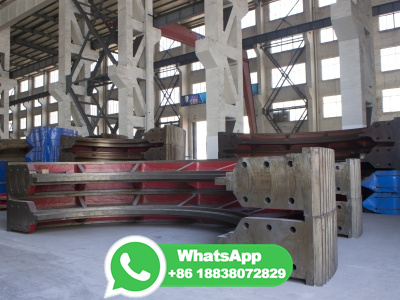
WEBMar 18, 2016 · Semicoke generated in the coalbased direct reduction process of iron ore is a solid waste and its effective utilisation has not been developed so far. In order to develop it properly, the characteristics of this semicoke have been comprehensively studied and an investigation was carried out into the use of semicoke as an alternative .
WhatsApp: +86 18203695377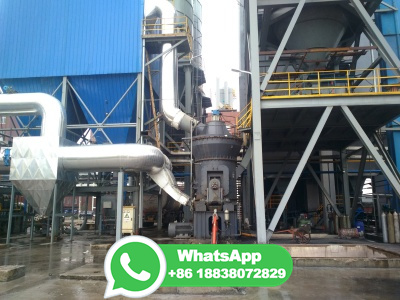
WEBJan 1, 2008 · Abstract The present paper develops a onedimensional model of a novel coal based iron ore direct reduction process. In this process, a mixture of iron ore, coal fines and small amount of binder is made into pellets and these are placed in a bed. Air is forced upward through the pellet bed and provides oxygen for the volatiles and part of .
WhatsApp: +86 18203695377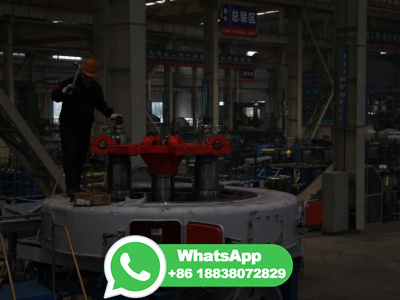
WEBAug 23, 2022 · Since coking coal is scarce [2,3], noncoking coal and charcoal can be used as alternative energy sources for the direct reduction process involving an iron extraction route that does not require ...
WhatsApp: +86 18203695377
WEBAug 8, 2021 · The steel industry represents about 7% of the world's anthropogenic CO 2 emissions due to the high use of fossil fuels. The CO 2lean direct reduction of iron ore with hydrogen is considered to offer a high potential to reduce CO 2 emissions, and this direct reduction of Fe 2 O 3 powder is investigated in this research. The H 2 reduction .
WhatsApp: +86 18203695377
WEBAug 26, 2023 · Direct reduction ironmaking is a technological process of smelting ore into metallic iron under the condition of solid ore or solid–liquid mixed state [3]. ... the optimum roasting temperature of coalbased direct reduction treatment of copper slag is 1175 °C, the iron grade can reach %, the metal recovery rate is %, and copper and ...
WhatsApp: +86 18203695377
WEBKobe Steel has developed coalbased direct reduction (DR) technologies, the FASTMET, FASTMELT and ITmk3 processes, which reduce carbon composite agglomerates (pellets or briquettes) on the hearth of a rotary hearth furnace (RHF). This paper outlines the features of each process, status of technical development and commercialization. Also .
WhatsApp: +86 18203695377
WEBAdditionally, the direct reduction process was analyzed and then explained the release pattern and impact mechanism of NO x precursors (NH 3, HCN, and HNCO) in this complex reaction process. ... the reduction rate of iron ore using biomass reductant is higher than that of the coke powder/anthracite coaliron ore composite pellet [32]. It has ...
WhatsApp: +86 18203695377
WEBMay 4, 2023 · At present, fossil fuels are the steel sector's bloodstream: 27 EJ (10 18 J) of coal, 3 EJ of gas and 5 EJ (1400 TWh) of electricity are consumed annually for the production of the mostly widely ...
WhatsApp: +86 18203695377
WEBMar 1, 2009 · The charge is introduced into the furnace at the top. Blasts of heated air from large blast stoves and in most cases, gaseous, liquid, or powdered fuel are ~~ I~ Iron ore p;:eparatj()IO JQl~'t= A Coking coal Torpedo ladle Fig. 2 Blast furnace process Issue 2 Shift From Coke to Coal Using Direct Reduction Method and Challenges furnace.
WhatsApp: +86 18203695377
WEB2010. Kobe Steel has developed coalbased direct reduction (DR) technologies, the FASTMET, FASTMELT and ITmk3 processes, which reduce carbon composite agglomerates (pellets or briquettes) on the hearth of a rotary hearth furnace (RHF). This paper outlines the features of each process, status of technical development and .
WhatsApp: +86 18203695377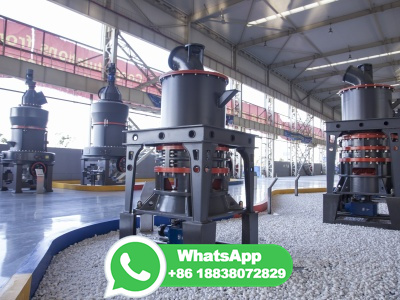
WEBDec 10, 2014 · A process of coalbased direct reduction roasting followed by magnetic separation was used to produce direct reduction iron (DRI) from highphosphorus oolitic iron ore. The effect of sodium sulfate, which was used as an additive in the roasting process, was investigated.
WhatsApp: +86 18203695377
WEBJan 1, 2024 · The CoalOreDirectIronReduction (Codir) Process combines features of the Waelz Kiln and the Krupp–Renn Process [74]. The Krupp–Renn is an iron ore reduction process designed for lowgrade ores that at one time had over 40 commercial installations, but high energy costs and availability of highergrade ores led to the .
WhatsApp: +86 18203695377
WEBMar 28, 2017 · Direct iron ore smelting (DIOS) process is a smelting reduction process for the production of hot metal (liquid iron). It is a twostage process which has been developed in Japan. It uses noncoking coal in a powder or granular form to smelt iron ore fines into liquid iron (hot metal) and hence, there is no necessity of a coke ovens plant .
WhatsApp: +86 18203695377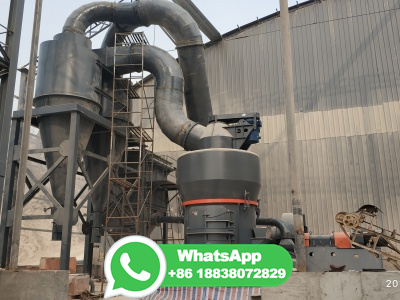
WEBMar 1, 2024 · 1. Introduction. Coalbased direct reduction (R) in iron ore smelting, emerging as a prominent method in the mid20th century, represents a significant evolution in response to energy crises and environmental concerns, entails the removal of oxygen from solid iron ore to produce solid sponge iron that can be used in electric arc furnace .
WhatsApp: +86 18203695377
WEBAug 8, 2021 · The yield of the direct H2driven reduction was examined and found to exceed 90%, with a maximum of 98% under the vibration of ~47 Hz with an amplitude of mm, and operating temperatures close ...
WhatsApp: +86 18203695377
WEBApr 20, 2015 · In a typical direct reduction process, coal and natural gas are used as alternative fuels to replace metallurgical coke. However, there is no fundamental improvement in the environmental pollution control for the direct reduction technology, especially concerning the carbon emissions, compared to the traditional ironmaking .
WhatsApp: +86 18203695377
WEBJun 27, 2018 · The primary energy source for the reduction of iron oxides for the integrated steelmaking process is coal while for the DREAF route the source of reducing gases can be not only natural gas (NG ...
WhatsApp: +86 18203695377
WEBApr 1, 2014 · Direct reduction refers to using gas or solid reductant in the reaction of iron ore reducing into metallic iron under softening temperature. The products are called direct reduced iron (DRI). The coalbased direct reduction process makes ferric oxide metallic Fe into metallic iron under solid state.
WhatsApp: +86 18203695377
WEBSep 1, 2016 · Solid wastes derived from metallurgical industries have created threats to the environment and their disposal is a major concern for the World. Semicoke generated in the coalbased direct reduction process of iron ore is a solid waste and its effective utilisation has not been developed so far.
WhatsApp: +86 18203695377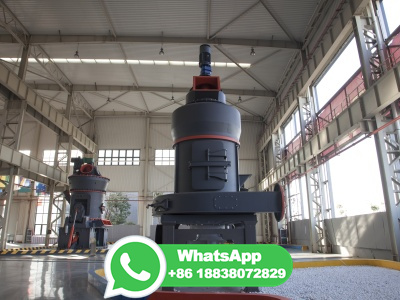
WEBOct 20, 2015 · The direct reduction process of carbonbearing highphosphorus iron ore pellets was described approximately by XRD spectrum. However, it was difficult to make a detailed explanation for the changes of fluorapatite after 10 minutes reaction.
WhatsApp: +86 18203695377
WEBJul 21, 2022 · The direct reduction process is one of the solutions for the manufacturing of iron which is energyefficient and low in CO2 emissions. Titanomagnetitetype iron sand is an important alternative source of iron minerals for countries with long coastlines. Thus, the process of making iron through direct reduction and using iron sand as the main .
WhatsApp: +86 18203695377
WEBFeb 17, 2011 · For the coalbased direct reduction process, considerable studies have been done for hematite ores [11][12][13][14][15][16], in which the following process of magnetic separation has also been ...
WhatsApp: +86 18203695377
WEBDec 1, 2018 · We show that hydrogen direct reduction steelmaking needs MWh of electricity per tonne of liquid steel, mainly for the electrolyser hydrogen production. If renewable electricity is used the process will have essentially zero emissions. Total production costs are in the range of 361–640 EUR per tonne of steel, and are highly .
WhatsApp: +86 18203695377